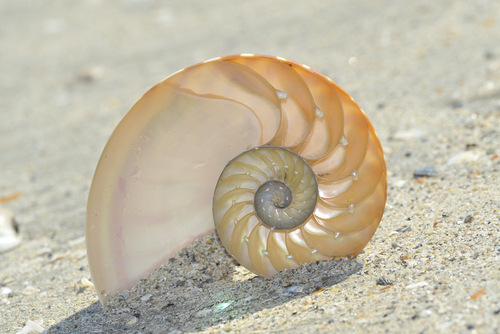5 – Orb Web Spiders,
- There are approximately 5,000 types of orb web spiders. All of them create near-perfect circular webs that have near-equal-distanced radial supports coming out of the middle and a spiral that is woven to catch prey.
- It’s not clear why orb spiders are so geometrically inclined. Tests have shown that orbed webs are no better at catching prey than irregularly shaped webs.
- Some scientists theorise that orb webs are built for strength, with radial symmetry helping to evenly distribute the force of impact when a spider’s prey makes contact with the web. This would mean there’d be less rips in the thread.
- But if this is a better web design, why aren’t all spiders utilising it? Some spiders have the capacity to produce orb webs, but don’t seem bothered. It’s a case that requires further study.
4 – Crop Circles,
- Some string, a board and the cover of night are the only conditions some pranksters need to create perfect symmetrical crop circles. Some of them are so intricate that many people refuse to believe their self-confessed human creators; they insist that only aliens could be capable of such a feat.
- It’s possible alien-made crop circles exist on Earth; however, the fact the circles are getting more complicated suggests most are man-made. It’s counterintuitive to think aliens trying to make contact would create increasingly complicated messages that are near impossible to decipher. It’s more likely people are learning from each other through example.
- No matter whether they come from aliens or some futuristic lawn-mowing service, crop circles are a sight to behold because they’re so geometrically impressive.
- A study conducted by physicist Richard Taylor revealed that, somewhere in the world, a new crop circle is created every night, and that most designs demonstrate a wide variety of symmetry and mathematical patterns, including Fibonacci spirals and fractals.
3 – Starfish,
- Starfish or sea stars belong to a phylum of marine creatures called echinoderm. Other notable echinoderm include sea urchins, brittle stars, sea cucumbers and sand dollars.
- The larvae of echinoderms have bilateral symmetry, meaning the organism’s left and ride side form a mirror image. However, during metamorphosis, this is replaced with a superficial radial symmetry, where the organism can be divided into similar halves by passing a plane at any angle along a central axis.
- Sea stars or starfish are invertebrates that typically have five or more ‘arms’. These radiate from an indistinct disk and form something known as pentaradial symmetry.
- Their evolutionary ancestors are believed to have had bilateral symmetry, and sea stars do exhibit some superficial remnant of this body structure.
2 – Peacocks,
- Most animals have bilateral symmetry, which means drawing an even centre line would create two matching halves.
- The peacock takes the earlier principle of using symmetry to attract a mate to the nth degree. In fact, Charles Darwin, who famously conceived the survival of the fittest theory, detested peacocks. In an 1860 letter, he wrote ‘The sight of a feather in a peacock’s tail, whenever I gaze at it, makes me sick!’
- Darwin thought the peacock’s tail was a burden that made no evolutionary sense. He remained furious until coming up with the theory of sexual selection, which asserts that animals develop certain features to increase their chances of mating. Male peacocks utilise their variety of adaptations to seduce sultry peahens. These include bright colours, a large size, a symmetrical body shape and repeated patterns in their feathers.
1 – Sun-Moon Symmetry,
- The sun has a diameter of 1.4 million kilometres, while his sister, the Moon, has a meagre diameter of 3,474 kilometres. With these figures, it seems near impossible that the moon can block the sun’s light and give us around five solar eclipses every two years.
- So what causes these solar eclipses? By sheer coincidence, the sun’s width is roughly four hundred times larger than that of the moon, while the sun is about four hundred times further away. The symmetry in this ratio causes the moon and sun to appear almost the same size when seen from Earth, and, therefore, it becomes possible for the moon to block the sun when the two align.
- Earth’s distance from the sun can increase during its orbit. If an eclipse occurs during this time, we see what’s known as an annular or ‘ring’ eclipse. This is because the sun isn’t completely hidden.
- Every one to two years, though, the sun and moon become perfectly aligned, and we can witness a rare event called a total solar eclipse. You know that Madonna song, Total Eclipse of the Heart? This is like that, but with astrology.
- Astronomers don’t know how common this symmetry is between other planets, suns, and moons, but theorise that it’s quite rare. Every year, though, our moon drifts roughly four centimetres further from Earth. This means that, billions of years ago, every solar eclipse would have been a total eclipse.
- If things continue as they are, total eclipses will eventually cease entirely – as will annular eclipses, assuming the planet lasts that long. With this in mind, it’s easy to conclude that we’re simply in the right place at the right time to witness this phenomenon. Some have theorised that this sun-moon symmetry is the special factor which makes life on Earth possible.







Great